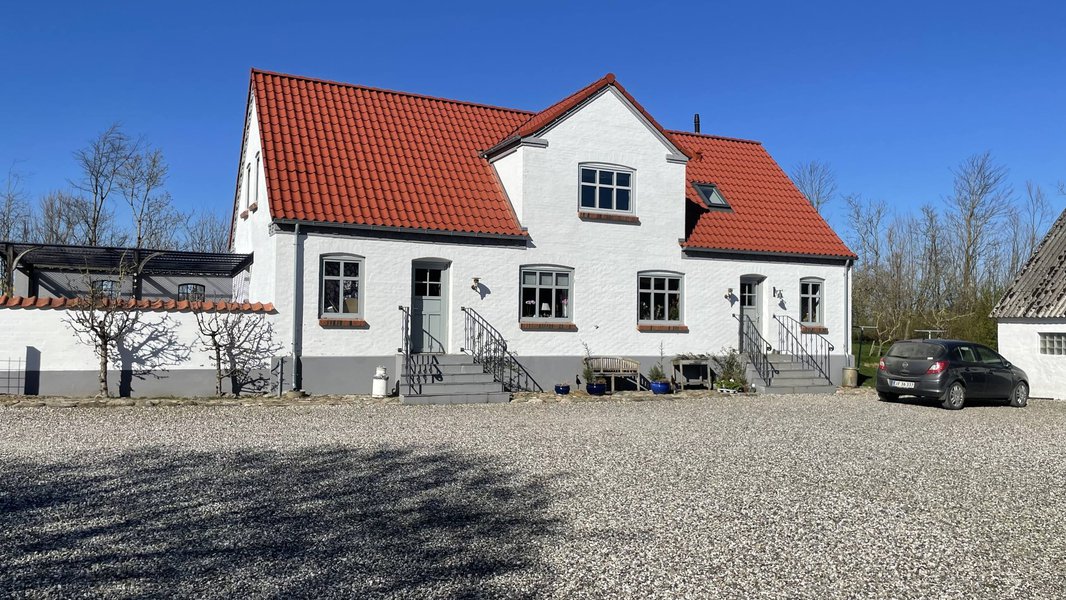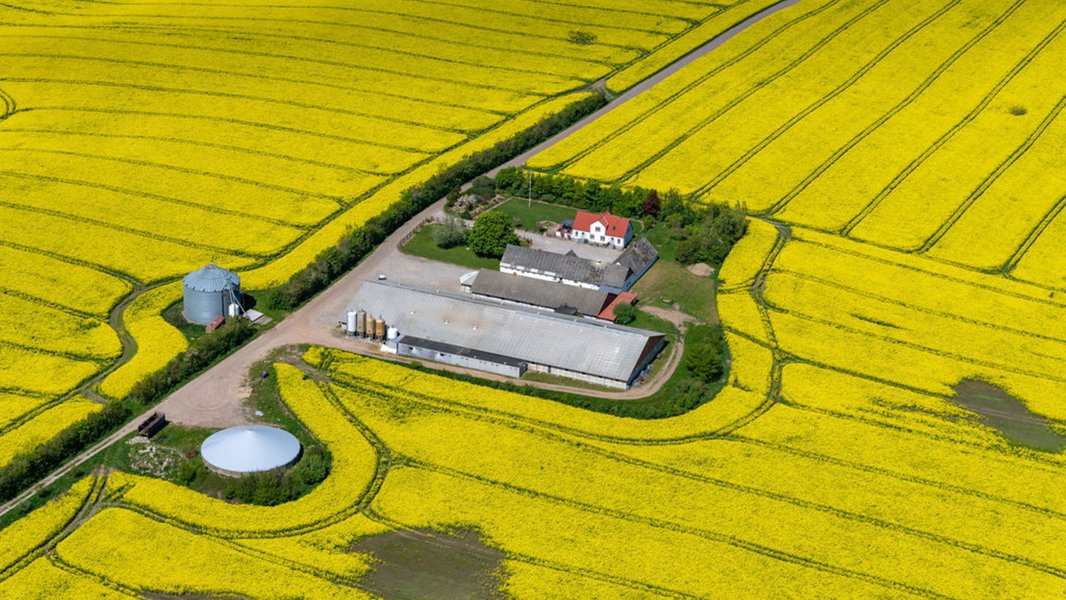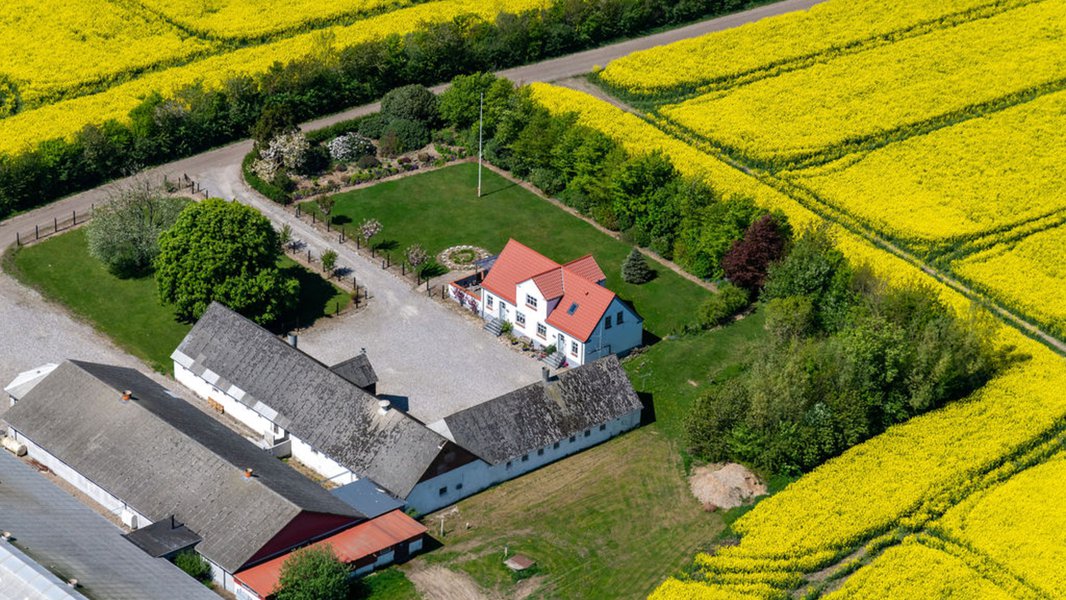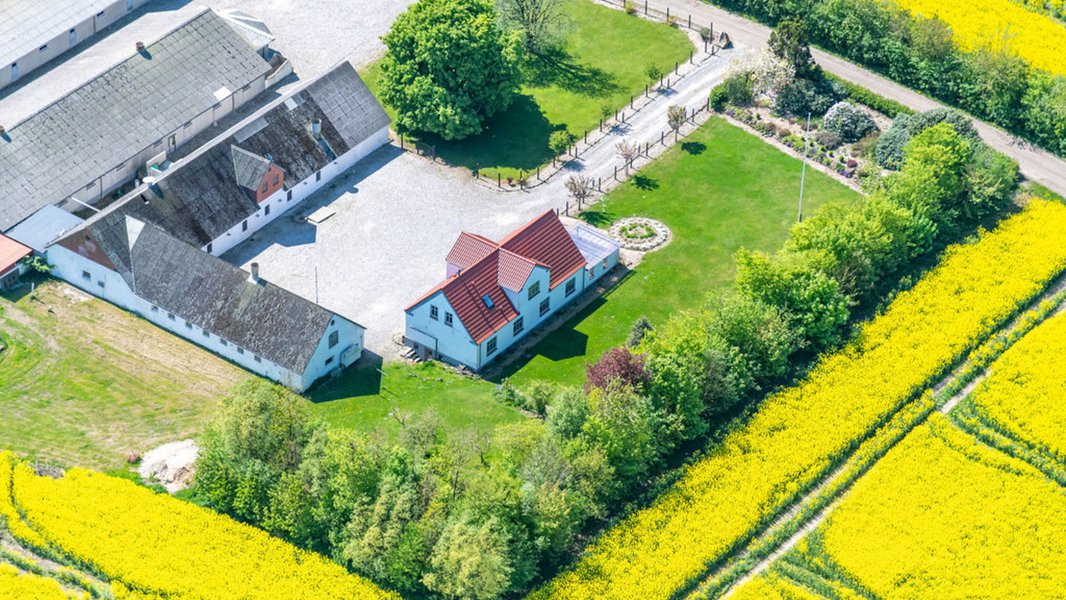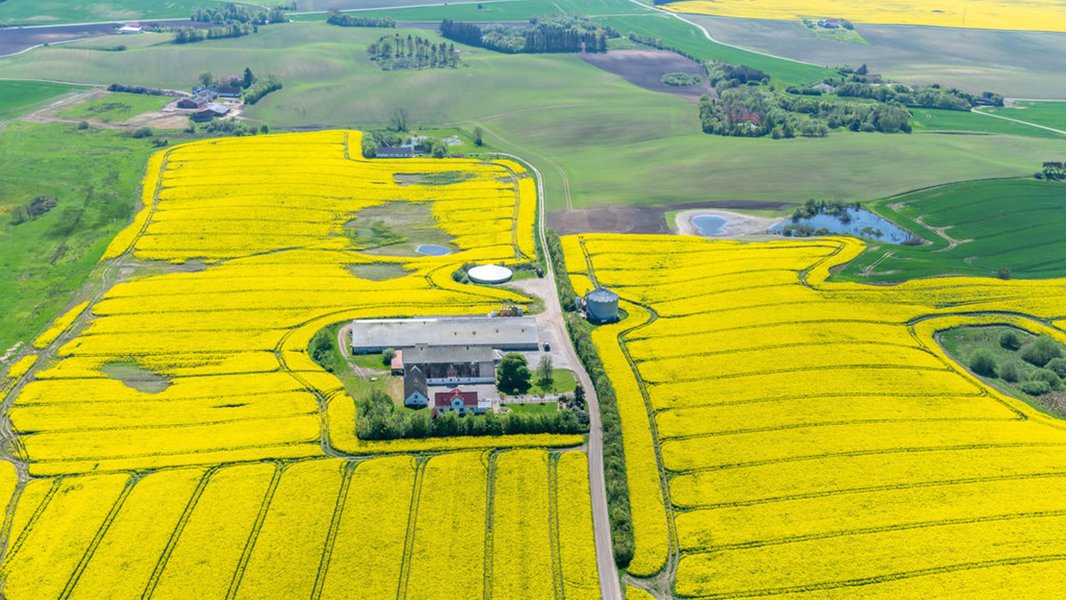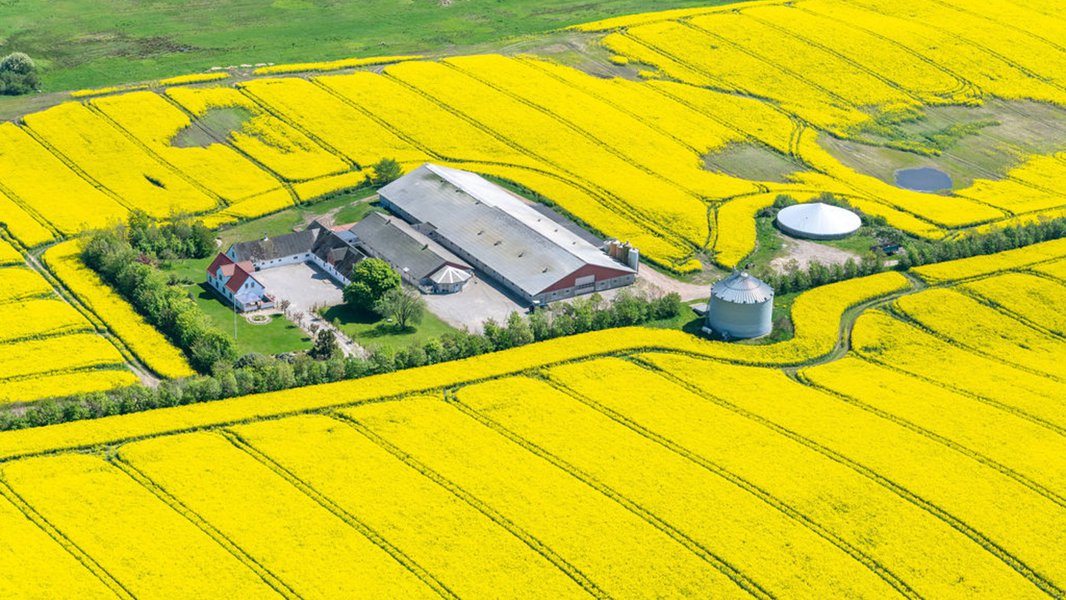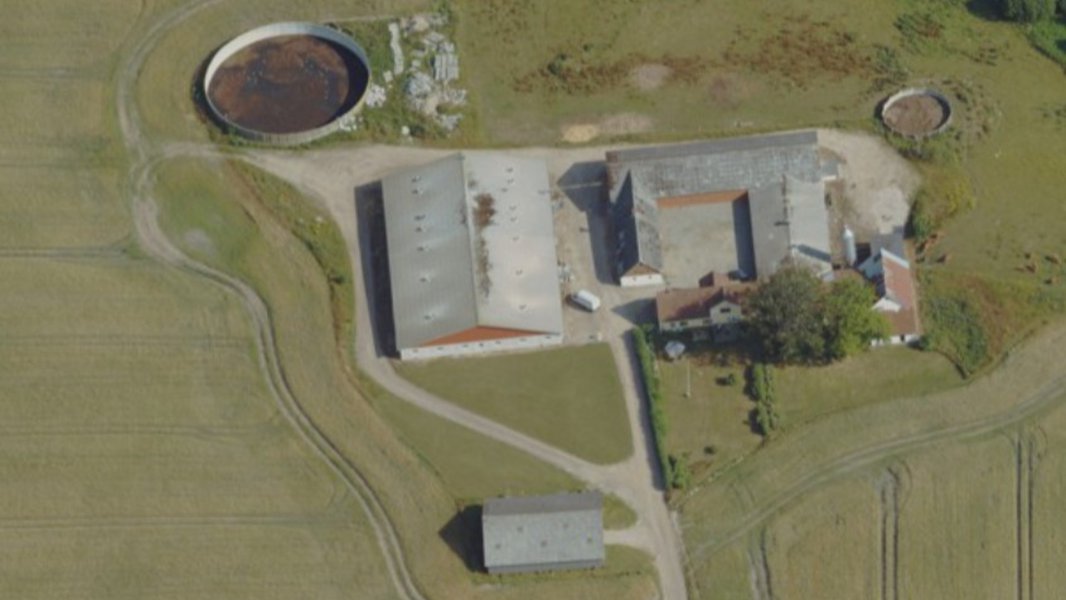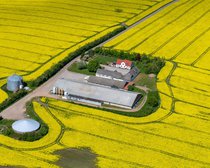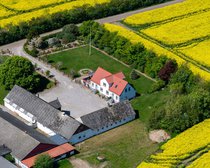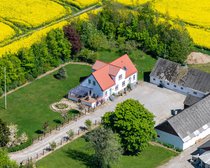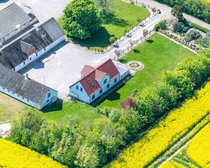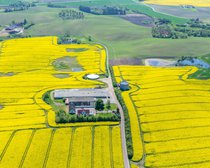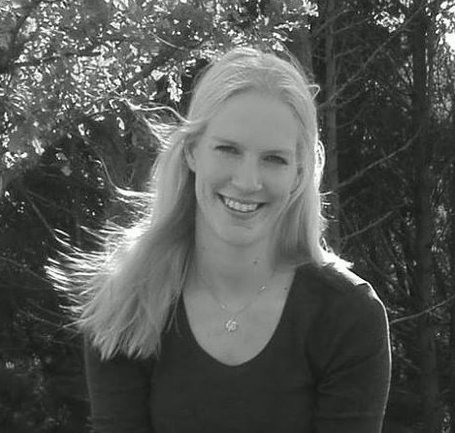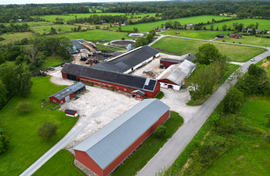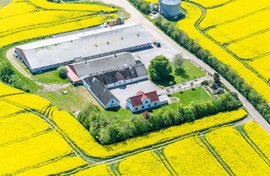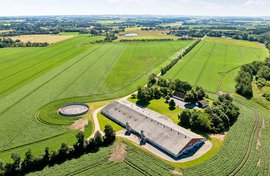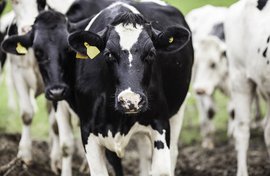Pig farming
164.4 ha. DKK 49,500,000,- For sale Pigs
Østervrå, Northern Jyland, Denmark
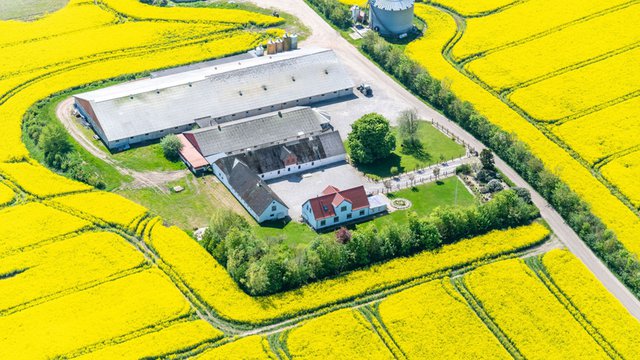
Description
Attractive pig farm with 975 sows and associated climate controlled stalls and a total registered area of 164.35.
Land:
- The total registered area is 164.35 hectares, which are divided into 130.60 hectares of arable land and 17.91 hectares of pasture/perennial grass.
- The fields are leased till 31/12/2025 and are settled against the supply of 30 tdr of grain/ha supplied by the lessor. The tenant buys manure and delivers straw on shards equivalent to 80 minibig bales. The agreement is terminable on 6 months' notice till the end of the lease year.
Farm buildings:
- Skovende consists of pig production with 975 sows, with the main building being from 2004 of 2,880 sqm. There are good welfare facilities for changing rooms and living rooms, farrowing pens with a total of 214 farrowing pens, gestation pens with transponders, mating pens, control pens + sick bay with deep litter. In addition, there are 2 climate pavilions with capacity for 800 weaned pigs and a grinding/mixing plant fed from 1,100 tonnes of American silo. There are good opportunities for expansion on the site.
- Since 2019, DKK 2 million has been invested in the farm buildings on Skovendevej. In 2019, the climate controlled stables received cast iron grates as well as 2 feed boxes in all pens, additional drinking cups and floating filler in all pens. In 2020, additional water drilling was instituted. In 2023 new paving in all farrowing pens and in 2024 the manure tank was covered and the bottom of the American silo was renovated. In addition, a ground/water heat pump and manure cooling will be installed in the farrowing pen.
- V. Ringsholt consists of climate and gilt barns and is located west of Stenhøj. The climate barn was built in 2002 and renovated in 2021, this is a built-up area of 1,300 m² consisting of 9 sections with 4,000 pen spaces equipped with space heating, underfloor heating and phase feeding. Older but absolutely serviceable stalls produce gilt for the sow herd at Skovende. There is also a machine house, a barn for suckler cows with deep litter, a feed shed and a manure tank of 3,000 and 400 m³.
Residence:
- Skovende has a beautiful 224 sq m house that was completely renovated in 1992 and presents itself beautifully with a high plinth, white stucco and red tiled roof.
- V. Ringsholt's house is rented out and has an older character.
Herd:
- The herd is free of PRRS, but has MS, Ap6 and Ap12. There is good efficiency with 37.4 pigs per year sow and a daily growth rate in the climate-controlled barn of 406 g/day and a mortality rate of 3.8%.
About Denmark
Denmark is one of the oldest kingdoms in the world. Denmark consists of the large peninsula of Jutland and some large islands. The island of Fyn is connected with Jutland via a bridge. The island of Zealand is connected with Fyn by means of a tunnel and a bridge. In addition, Greenland and the Faeroe Islands are part of the State of Denmark. The capital city of Copenhagen is situated on the island of Zealand. The only country border is the one with the German state of Schleswig-Holstein. Recently, a bridge has been built between Denmark and Sweden. Furthermore, Denmark is surrounded by the North Sea (on the west), the Kattegat between Jutland and Sweden, and the Sound between Zealand and Sweden. The capital city of Copenhagen is situated by the sea, the Sound, and it has a population of approximately one and a half million. As a port, Copenhagen is the trade centre for i.a. industries, breweries (Carlsberg, Tuborg) and shipbuilding (Maersk). Denmark has approximately 5.8 million inhabitants. This means that it has an average of 136 people per square kilometre. Over half the Danish population live on the islands east of Jutland, whereas a quarter of the population live in or around the capital city of Copenhagen. At present, over 80% of the population live in urban areas, and this number will further increase as a result of industrial growth.
Social security contributions are paid through the tax system. As a result, no tuition fees, no contributions for national compulsory health insurance, and no old-age pension contributions need to be paid. Children in Denmark have to attend compulsory education between the ages of 7 and 16. From the age of three, they may go to a børnehave (a kind of pre-school/kindergarten), from the age of six they can go to the preparatory year for primary school. Most villages have a school. Primary school is attended for nine years, after which there is an optional tenth year, which is often attended at the principal town of the municipality. Most children (93%) go to the folke schools, which are free. According to the present Constitution, the Evangelical-Lutheran Church is the Danish folkekirken (= people’s church), and as such it is supported by the State. Approx. 95% of all Danes are members of the folkekirken. Apart from members of folkekirken, there are about 6500 Roman Catholics, 700 Reformed Protestants and 6500 Baptists in Denmark. These churches are recognized by the Danish State.
Denmark has a maritime climate. Average annual precipitation is around 664 mm, half of which falls between July and October. The wettest month is August at 81 mm; the driest month is February with an average rainfall of 39 mm. In summer, occasional stormy winds from the west bring some cool weather. Winters are temperate due to a westerly gulf stream that tempers the cold. The Danish weather is changeable but never extreme. April and May are mild. In general, the months of June, July and August are warm (16.6 °C on average). A typical Danish summer has alternating periods of rain and sun. The spring months are pleasant, but cooler. The winter months are cool and sometimes cold, while light snowfall is normal. February is the coldest month of the year at an average temperature of -0.4°C.
Denmark produces food for approximately 15 million people (three times the Danish demand), two-thirds of which are exported. Despite the important part played by agriculture in Denmark, only 96,000 people, i.e. 3% of Demark’s total workforce, work in agriculture. Denmark has about 42,000 farming operations; as recently as 1950 this figure stood at 200,000. During the last decade, the average size of farming operations has increased from 21 to 65 ha. The average age of the Danish farmer is 52. Dairy farming Denmark is a dairy country that exports many dairy products. The national milk quota is 4.6 billion kg . A large share of its exports goes to the EU (Germany 20%, Great Britain 15%). All dairy farmers can buy quotas at the quota exchange. There are four trading-rounds at the exchange each year. The price is set on the basis of the average of amounts of supply and demand. From all transactions, 1% is skimmed off for the benefit of start-up farmers. All transactions conducted outside the exchange system get deducted by 50%. To prevent overproduction of manure in concentration areas, Danish agriculture has a system whereby there has to be a balance between the number of animals at a farm and the number of hectares. In this regard, a distinction is made between the different kinds of animals, the quantity of animals, and the number of hectares owned. Of the requisite amount of land, 30% must be freehold. The surplus amount of manure can be disposed of through leases or manure disposal arrangements. All livestock farmers must submit a cropping plan to the plantdirektorat. This includes a specification of crops for each parcel of land and the fertilization plan involved. The farmers’ association then calculates the permitted amount of artificial fertilizers to be spread, taking into account a useful nitrogen content of 45% from liquid manure. In the months of October through January, there is a ban on the disposal and application of manure. The storage capacity of manure for existing farms extends over a period of 7 months, and, for new farms, 9 months. In Denmark, farms are traditionally built on the attached land-parcels so that most of the “original” lands lie around the buildings. Historically, Danes are arable farmers who began keeping livestock to eat their crops and use their straw. There is still a lot of arable farming in Denmark, so you can see a great many cereal crops there. Maize is grown in Denmark. Soil types vary from light sandy soil to clay soil. The lighter sandy soils generally have to be irrigated in the period of July/August, because these months are often hot and dry.

